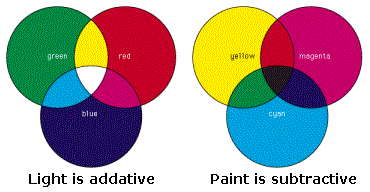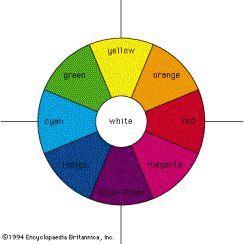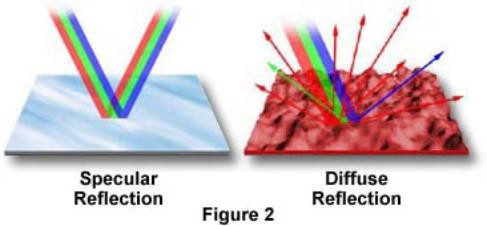Color Concepts
Appeared in Esox Angler – Issue 6/Spring 2001
By Jason Long
 When I visit my favorite musky tackle shop, I’m like a kid in a toy store. My eyes light up from the many brightly colored and flashy lures, I smile from ear to ear, and dream of catching a trophy on each and every one of them. Its amazing how creative and talented lure painters have become. Some have mastered replicating exact natural colorations while others have designed a potpourri of brilliant fluorescent colors that resemble no living creature on the planet. Amazingly enough, all these various color patterns, whether life-like or not, will produce fish at one time or another. Does this mean that lure colors are only designed to attract the fisherman’s attention in the store rather than to trigger an effective musky strike. Not by a long shot!
When I visit my favorite musky tackle shop, I’m like a kid in a toy store. My eyes light up from the many brightly colored and flashy lures, I smile from ear to ear, and dream of catching a trophy on each and every one of them. Its amazing how creative and talented lure painters have become. Some have mastered replicating exact natural colorations while others have designed a potpourri of brilliant fluorescent colors that resemble no living creature on the planet. Amazingly enough, all these various color patterns, whether life-like or not, will produce fish at one time or another. Does this mean that lure colors are only designed to attract the fisherman’s attention in the store rather than to trigger an effective musky strike. Not by a long shot!
I think that muskies have been caught on lures of almost every conceivable color in the visible light spectrum. In many of these cases, lure color probably played no significant part in the musky encounter and it was simply a matter of being in the right place at the right time. In fact, I’d be willing to bet that lure color is not a factor in over half of the muskies caught each year. Therefore, if you want to be a good musky fisherman, simply master the art of locating muskies and the mechanics required to successfully land them. BUT, if you want to become an exceptional musky fisherman, then you must also learn how to trigger more strikes and make them more effective strikes as well. Although lure action is a key component to triggering a musky strike, I believe lure color can increase both the number and quality of musky strikes you provoke.
As an engineer working in Research and Development, I have learned how to both study a topic and apply what I have learned to the real world. This is exactly what I have begun to do with regard to lure color and musky vision. When it comes to musky fishing, however, it is next to impossible to conduct controlled experiments. Therefore, I can only interpret scientific evidence and theorize how it applies to musky fishing based on two decades of intense Esox Angling experience. At the very least, hopefully I can improve your musky hunting success by increasing your confidence in a certain lure color and perhaps provide some greater insight towards your lure color-selecting strategy.
Light and Color
Understanding the behavior of light, color perception, and vision is a complicated process. Comprehending these functions in the underwater world is even more complex, however insight to a few basic scientific principals can greatly enhance your approach to musky fishing.
First, the most basic aspect of light must be explained. Light is a form of energy that travels through various wavelengths measured in nanometers(nm). Light from the sun is considered white light, and consists of many different wavelengths. Only a small portion of the sun’s energy is visible, thus this region is referred to as the visible light spectrum.

Color can be produced in two ways, through the additive or subtractive process. Starting with no light, and then adding subsequent wavelengths, the resulting color will mix together and change in appearance. The sum of all visible light wavelengths adds up to produce white light. Subtractive color is the reverse process and is the foundation for the color of everything we see around us. The color of an object, your best crankbait for example, is the light it reflects. In daylight conditions, white light strikes an object and the object selectively absorbs and reflects various wavelengths. The wavelengths reflected are what travels to the observer’s eye to produce the perception of color. Therefore, the absorption and reflection of light energy (wavelengths) forms the basis for color perception and the function of vision.

Color development underwater is influenced by both the additive and subtractive processes. Objects still reflect light as they would above water, however water acts as a selective filter and can absorb and transmit differing wavelengths. Therefore, a lure of a certain color above water in daylight conditions can appear as a different color underwater because the water may absorb a certain wavelength and the source of illumination is no longer white light. In the underwater world BOTH additive and subtractive color development influence the perceived color of an object much more so than above water. This really complicates a fisherman’s ability to predict the color of a lure at various depths, illumination, and water clarity.

VISION – Do Muskies See Color?
 Biologists have studied the eye structures of many fish, including muskies. Their conclusion is that fish can see color very well, and have even adapted to the unique light conditions their specific habitat may provide. The reason fish can perceive color is due to the presence of cones within the eye. Cones consist of three types of cells, each tuned to a distinct maximum wavelength response centered at 430 nm (blue), 535 nm (Green), and 600 nm (red). Pure cone vision is referred to as photopic vision and is dominant at normal light levels. Therefore, fish have excellent color vision and acuity during daylight conditions. Limited studies have been conducted specific to muskellunge vision, which suggest that muskies do not have a cone sensitive to blue light. If this is true, it compounds matters even further. Therefore, I’m going to assume the musky is similar to most other fish and utilizes three cones for color vision.
Biologists have studied the eye structures of many fish, including muskies. Their conclusion is that fish can see color very well, and have even adapted to the unique light conditions their specific habitat may provide. The reason fish can perceive color is due to the presence of cones within the eye. Cones consist of three types of cells, each tuned to a distinct maximum wavelength response centered at 430 nm (blue), 535 nm (Green), and 600 nm (red). Pure cone vision is referred to as photopic vision and is dominant at normal light levels. Therefore, fish have excellent color vision and acuity during daylight conditions. Limited studies have been conducted specific to muskellunge vision, which suggest that muskies do not have a cone sensitive to blue light. If this is true, it compounds matters even further. Therefore, I’m going to assume the musky is similar to most other fish and utilizes three cones for color vision.
Like humans, the musky’s eye also contains rods. Rod cells have a peak sensitivity to green light (about 550 – 555 nm), although they display a broad range of response throughout the visible light spectrum. The light sensitivity of rod cells is about 1000 times that of cone cells, however the images generated by rod stimulation alone are relatively unsharp and confined to shades of grey. Rod vision is commonly referred to as scotopic or twilight vision because in low light levels it allows us, or a musky, to distinguish shapes and the relative brightness of objects, but not their colors.
So what does this mean for musky fishing? It means that your color selection criteria should be viewed differently depending on the dominant form of vision the fish will be using. Light conditions will dictate the mode of vision, and there are several factors that influence environment illumination. The obvious factor is the presence and angle of the sun. Not just night or day, but the angle to the water?s surface (dawn, noon, dusk, spring, fall, etc.) can make a significant difference. Cloud cover, wave action, water clarity, turbidity, hardness, etc. can all influence light penetration and the dominant mode of vision for each condition.
Under high illumination photopic (color) vision will prevail, however rods provide peripheral vision. This is an important aspect to consider, especially when using flash as an attractant. An object easier to detect through peripheral vision has a much higher probability of getting the observer’s attention. Taking advantage of this concept can potentially increase the distance from which a musky can detect your lure, increasing its effectiveness for triggering a positive response. Which lure would you want to throw, one that can be seen 5 feet away or the same lure in a different color pattern that can be seen from 10 feet away. On any given day BOTH lures may produce, however I’d select the lure with greater visibility to reduce the number of casts required to place that lure in the strike zone of a musky. A more visible lure effectively increases a musky?s strike zone AND your chances of triggering a strike.
EVEN MORE SCIENCE
I have a theory that in order to maximize a lure’s attracting capability, it must produce flash or reflect light to stimulate a response. However, simply attracting the attention of a giant musky is not enough to bring it in the boat for a quick photo session. If you want more than just a follow, you must trigger a successful strike. A successful strike requires a good, identifiable target created by lure contrast against its background. Many people mistake contrast for silhouette because they have a similar effect, however, contrast has color, and a silhouette does not. Therefore, the ultimate musky lure will provide maximum flash (reflectance of light) as an attractant and contrast (absorption of light) to provide a good target.
Understanding the physics of light and how it behaves in our fishing environment, along with some general knowledge for how the eye creates the perception of color through the stimulation of rod and cone cells with light energy, can be applied to increase your fishing success. In other words, the blending of both biology and physics has identified many explainable color phenomena that I feel are applicable to successful musky fishing.
Purkinje Shift
The Purkinje Shift is a technical term relating to the transition from photopic (daytime/color) vision to scotopic (nighttime/black & white) vision. As light levels decrease, the eye’s peak wavelength response shifts, and becomes more sensitive to blue-green rather than red which loses its color quickly. A great example is the appearance of a rose bush. During the day, the red rose will be very brilliant and the green leaves appear dull. At sunset or twilight, the leaves appear brighter than the rose. The same holds true just before a thunderstorm. Ever notice as a dark storm cloud approaches the trees become a vivid green, creating an eerie atmosphere. That’s the Purkinje Shift and the same phenomena can change the way your lure looks in the water.
Now let’s apply this phenomena to musky fishing. Let’s say you were having good success using an orange flash bait during the day and, as the sun hits the treetops, your action suddenly decreases. You might just think the fish finally turned off, but perhaps the orange lure is no longer as bright and flashy as it once was under higher illumination. Switching to a green based lure such as the common perch pattern could be all it takes to extend your success into darkness by continuing your ability to produce flash.
Brightness Contrast
One example of the relative nature of color is brightness contrast, also known as simultaneous contrast. Two identical colors appear different, depending on their background. In the example, a lighter background makes the same shade of gray appear darker and vice versa.

Simultaneous Contrast
The point I’d like to make here is that you must always consider the background from the musky’s perspective. You’ll often see me holding up a lure to the sky to see how well it contrasts with the background. Unfortunately, the water surface does not always appear as the sky does to us when we look up. Therefore, having a friend that is a SCUBA enthusiast can really teach you a thing or two on how the background (water surface) appears from below. As light conditions change, a lure can transition from casting a great silhouette (far left example) to producing the perception of flash (far right example). If you get caught in-between, your lure is almost invisible and you are no longer providing a target for the fish. Therefore, a musky must rely on senses other than sight to locate your lure.
A fluorescent orange reef hawg was the productive color while fishing stained water under blue skies, however notice the approaching cloud cover in the picture on the left. Once the clouds were overhead, the light conditions changed the ability of the orange to produce the flash needed to trigger strikes. The fish suddenly became active on black topwater baits which produced a better target against the lighter background provided by the overcast conditions. Also note the changing water color on my right vs. left.
Many musky fishermen consider silhouette only when fishing with surface baits. Furthermore, black has grown to be the most popular color choice for topwater applications. I feel that black is good only because it is a sure thing for producing contrast. In other words, you are guaranteed it will always be darker than its background and therefore produce a detectable target.
I feel producing a good target is one of two key factors for triggering a successful strike. Offsetting a lure from its background makes it easy to locate. I believe that many follows result, especially with topwater baits, because the fish is responding with its lateral line to a lure’s sound, but it cannot visually locate the source. In some of these cases, an aggressive fish may attempt a strike, however careful consideration to ensure a good contrasting target is provided will often trigger a more accurate strike that more consistently gets hooks into her jaw and allows you burn some film and preserve a good memory.
Complementary Colors
Another way to increase color contrast is to use complementary colors. These colors are opposite one another on a color wheel and have drastically different wavelengths. Complementary colors highly contrast each other and, when placed side by side, enhance the color of the other. Purple and yellow, red and blue, etc. are good examples.
Color Wheel

The popular and productive Firetiger patterns do not incorporate complementary colors, however the black tiger stripes provide the lure’s contrast. The same holds true for the popular bright color with black dots patterns. I don’t think someone put the tiger stripes and dots on these baits just because they look neat. They actually serve a purpose. Good baits, but I won?t pass up an unusual pattern that uses complementary colors to produce contrast, as they will also have optimal flash.
Metamerism
When a person or musky views an opaque colored object, it is only the light reflected from the object that can activate the visual process in the eye and brain. The eye cannot detect whether the energy consists of a single wavelength or a combination of wavelengths. For example, two orange lures may appear to have the identical color in daylight, however one may be painted with an orange pigment and the other with a combination of red and yellow pigments. The lure painted with blended pigments will change color as the illumination conditions change. Lures will have less intense coloration at dusk, however the orange pigmented lure will still appear orange and the other may appear more yellow. Subtle changes that could make or break a fishing trip or explain why your buddy’s orange bait is hot and yours is not.
Specular vs. Diffuse Reflection
The way light responds to different surfaces is a critical element to consider. Specular reflection is light deflected from a smooth surface at a definite angle. Diffuse reflectance is light reflected from a rough surface in all directions. I apply these different behaviors of light to maximize a lure?s ability to produce flash under a variety of conditions.
Metallic surfaces are smooth and produce flash through specular reflection. When utilized properly, this type of reflectance can produce the most intense flash and be recognized or seen from greater distances. Unfortunately, specular reflection requires several factors in order to be effective. First, a direct source of illumination is required. This typically means direct sunlight or moonlight. Secondly, the object must reflect the direct light source at an appropriate angle to reach the observer, preferably your personal best musky. Since specular light reflection is in only one direction at an equal angle in which the light strikes the surface, the range or direction of flash produced is completely dependent on the location of the light source, lure movement, and position of the observer. A fisherman has little control over light and musky location, therefore lure position is critical when utilizing specular reflection. Increased distance of light travel is a big advantage with chromes and prisms, however the limited range can be a disadvantage.

Limited Range
- Dependent on Observer position
- More Intense
- Greater Distance
- Excels in Deep, Open Water
Infinite Range
- Independent of observer location
- Less Intense
- Less Distance
- Excels in Shallow, Heavy Cover
I have had some intense debates with other musky enthusiasts on whether a musky can see the flash produced from a metal finish bucktail blade. I believe the answer is yes, however it depends on many special circumstances. It all comes down to geometry and angle of reflection. Essentially, no direct light penetrates the water?s surface if it does not approach the surface at an angle greater than about 30 degrees. This has to do with the refractive index of water and how it bends light. Wave action, however, can reduce the critical angle of the sun required for light to penetrate the surface and also increase the number of directions the blade can reflect light. Therefore, I feel metal finish blades are most effective when a source of illumination (sun or moon) is at an angle greater than 30 degrees to the horizon or there is good wave action to increase the incident angle of light contacting the surface. Wave activity actually reduces the overall quantity of light which can penetrates the water?s surface, however it scatters it in many different directions producing a wider range of ?flash? or angles of reflection that the blade can produce. In other words, wave action increases the number of locations from which an observer can see the blade’s flash, however it also reduces its intensity or distance from which a fish can see the flash. Sometimes, especially in clear water situations, flash can be too intense and produce a negative response. Therefore, wave action definitely increases the effectiveness of metal blades in clear water.
Painted blades, however, utilize diffuse reflection providing a more consistent and wider range (direction) of flash. Perhaps not as intense of a flash as that produced with metal finishes since light is reflected or scattered in an infinite number of directions, but it is less dependent on the location of the observer and light source. Therefore, when fishing shallow water where distance is not much of a factor, or when there is no direct source of illumination (you don’t cast a shadow) I favor painted blades.
 The incorporation of fluorescent colors further enhance the intensity of the flash, increasing the distance from which the blade can get the attention of an unsuspecting observer. Furthermore, I feel that incorporating the perception of flash from the blade and contrast from the lure body produces a more effective combination. For example, a chartreuse blade over a chartreuse body does not produce as good a target as chartreuse over black. An often-overlooked contrast scenario is to use darker blades (orange, black, red, etc.) with a lighter body such as white or chartreuse to take advantage of a flicker effect from the brighter background. The rotation of the blade temporarily blocks the light from its background (shadow) and then lets it pass through. This motion creates a flicker effect by using the brighter background to create the perception of flash. Larger profile and slower revolving blades produce the most dramatic flicker effect and can often make the difference when conventional flash-producing bucktails aren’t producing.
The incorporation of fluorescent colors further enhance the intensity of the flash, increasing the distance from which the blade can get the attention of an unsuspecting observer. Furthermore, I feel that incorporating the perception of flash from the blade and contrast from the lure body produces a more effective combination. For example, a chartreuse blade over a chartreuse body does not produce as good a target as chartreuse over black. An often-overlooked contrast scenario is to use darker blades (orange, black, red, etc.) with a lighter body such as white or chartreuse to take advantage of a flicker effect from the brighter background. The rotation of the blade temporarily blocks the light from its background (shadow) and then lets it pass through. This motion creates a flicker effect by using the brighter background to create the perception of flash. Larger profile and slower revolving blades produce the most dramatic flicker effect and can often make the difference when conventional flash-producing bucktails aren’t producing.
Painted blades also excel when diffuse light prevails such as at dawn, dusk, or overcast conditions since they can still produce the perception of flash without a direct source of illumination. Metal blades are almost invisible and produce a mirror or ?black hole? effect in the absence of direct or incident light. By painting the outside of your metal blades you can take advantage of the black hole effect (metal backside) to further enhance the flicker phenomena produced as the blade rotates.
Open water fishing is another application where maximizing both flash and contrast is critical. A popular presentation is to use large, flat-sided crankbaits like the Jake, Grandma, or Slammer to produce flash from the sides and silhouette from the lure’s large profile. These baits are ideal for attracting fish from long distances. This is important when dealing with big muskies suspended deep over open water. When fish are suspended, not only is there a large amount of surface area to cover, the fish have depth working to their advantage as well. A high visibility presentation really excels in these conditions.
As stated earlier, maximum distance is achieved through specular reflection or flash produced from metal surfaces. As a result, crankbaits often incorporate prism tape and chrome, however many times these finishes lack good contrast for producing a target. If the majority of your lure is chrome, when not producing flash it is virtually invisible. Incorporating pigmented colors along with prism tape or chrome increases the visibility of a crankbait. Another option is to use Holoform prism tapes that have transparent areas to allow the painted surfaces underneath to remain exposed and provide contrast.
The author applied his color concepts to connect with this 50 incher from deep, open water on a small Wisconsin lake during post cold-front conditions in July 2000.
A black and chrome crankbait twitched to roll onto its dark backside was just the ticket for one of my personal best releases. Before sunrise, I had been working a 50 ft deep slot holding tremendous amounts of baitfish near the surface. I also marked several large hooks on my electronics at about 24 feet, which I suspected were musky. I worked this spot hard with a pearl-white lure until the sun rose above the treetops. Then, I switched to a chrome/black color of the same lure. About 5 casts later I CPR’d a solid 50″ Wisconsin musky. I honestly believe that the painted lure used earlier did not have an intense enough flash to reach the depth of the musky. When a direct source of illumination became available, switching to a chrome version of the same bait produced a more intense flash that was easily seen by the deeper holding fish and ultimately triggered the long anticipated strike.
CONCLUSION:
Hopefully enough evidence has been presented to convince you that color has a significant influence on the ability to present a visible target for a musky to strike. There are an infinite number of conditions that come into play, however simply acknowledging this fact can produce some keen insight that may give you an edge when conditions are tough. When fish are active and you have located them, color probably does not matter. However, when faced with adverse conditions or learning new water, applying a few simple color concepts can increase your chances for success. Furthermore, a more visible lure complements the popular run and gun method commonly used to search for active fish on large bodies of water. Ultimately, if you believe some of these concepts, and apply them with CONFIDENCE, success will follow. Besides, who cares if it’s correct color or the resulting confidence that is producing as long as you are catching ol esox.
